Puget Sound Dungeness crab season tentatively set to begin in early July in some areas plus a wide-range of fishing activities blooming this month Leave a reply
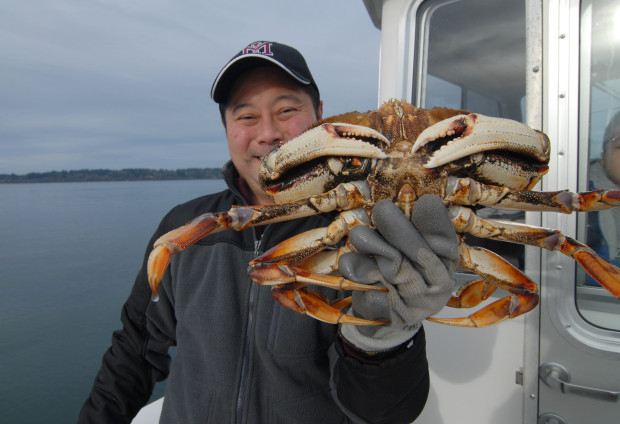
Before we cover the current fishing options let’s take a look ahead at what could be a blissful summer season for Puget Sound Dungeness crab.
Due to the COVID-19 situation all the opening dates noted below and now posted on the WDFW website are tentative and could change, therefore anglers should check the WDFW website at https://wdfw.wa.gov/ for updates and expect a news release to come out very soon.
The Dungeness crab season in the Strait of Juan de Fuca east of Bonilla-Tatoosh Island boundary line at Neah Bay (Marine Catch Area 4), Sekiu (5) and Port Angeles (6); the east side of Whidbey Island (8-1 and 8-2); and northern Puget Sound (9) will not open prior to July 2 and fishing will be allowed five days per week most likely similar to 2019.
WDFW shellfish managers are still finalizing specifics for central and south-central Puget Sound (10 and 11). Both will not open prior to July 2 and crabbing allowed most likely three days per week. This will be the first time Area 11 has been open after being closed in 2019.
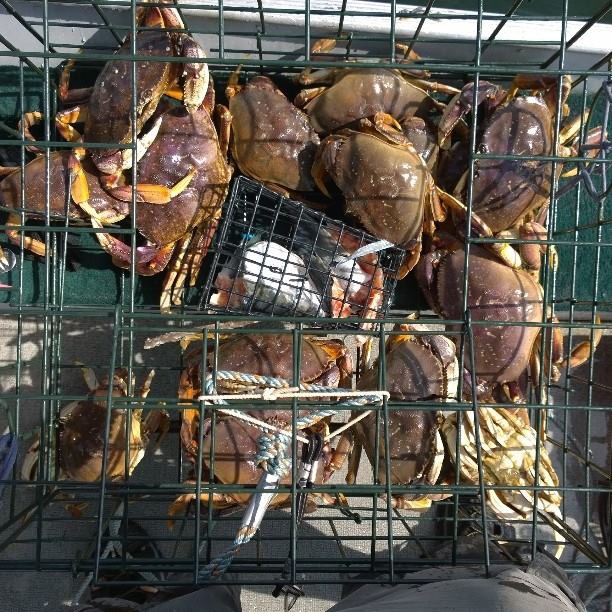
Hood Canal (12) north of Ayock Point will not open prior to July 2 and Fishing will be allowed five days per week most likely similar to 2019. Areas south of Ayock Point are not expected to be open this summer.
A section of San Juan Islands (7 South) will open around mid-July and most likely five days per week and similar to 2019. Another Sam Juan Island section known as “7 North” will open mid-August and most likely five days per week and similar to 2019. Those planning to crab after Labor Day will need a winter catch card.
Southern Puget Sound (13) will remain closed this summer to help crab populations rebuild.
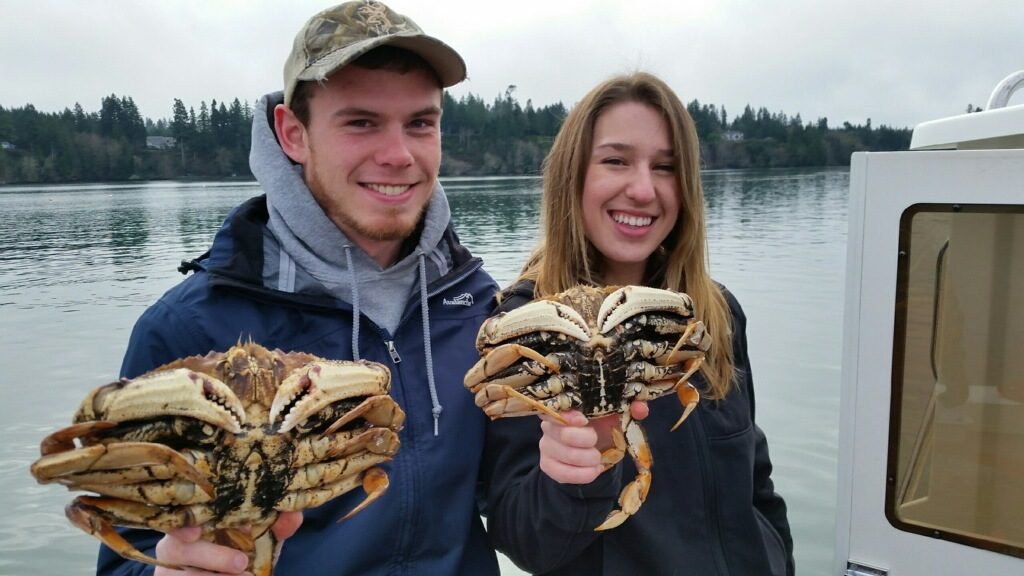
In 2019, the sport Dungeness crab fishery landed 1,660,752 pounds (compared to 1,585,956 in 2018 and 1,764,633 in 2017) in all Puget Sound catch areas.
Crabbers in Puget Sound must immediately write down their catch on record cards after retaining Dungeness crab. Separate catch record cards are issued for the summer and winter seasons.
The daily limit in Puget Sound is five male Dungeness crab in hard-shell condition with a minimum carapace width of 6¼ inches. Fishermen may also keep six red rock crab of either sex daily. Red rock crab must measure at least 5 inches. For additional details, go to https://wdfw.wa.gov/fishing/shellfishing-regulations/crab.
Be sure to view the WDFW website at https://wdfw.wa.gov/fishing for rules on social distancing. If public safety concerns develop, WDFW could close areas to further protect public health and safe resource management.
Word on salmon fishing
At this point the WDFW staff says it is their intent to open all the coastal ports for hatchery chinook on June 20-28 with a one salmon daily limit (release all coho) although the northern coast opening remains up in the air. Salmon fishing for chinook and hatchery coho will then be open daily beginning June 29 through Sept. 30 or until the sub-quota for each port is achieved.
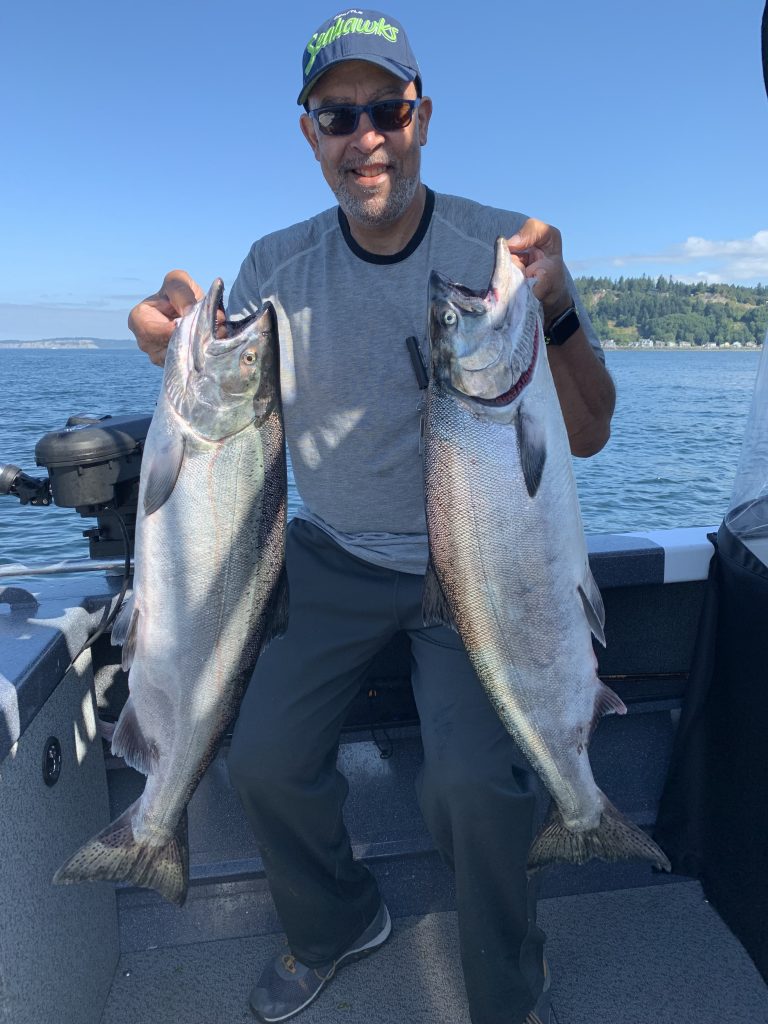
At Neah Bay (Area 4) the sport quota is 2,760 hatchery-marked coho and 5,600 chinook; La Push (3) is 690 hatchery-marked coho and 1,300 chinook; Westport (2) is 9,800 hatchery-marked coho and 12,460 chinook; and Ilwaco (1) is 13,250 hatchery-marked coho and 7,000 chinook.
A good gauge for anglers to keep tabs on is non-tribal commercial troll fishery, which began on May 6 (with a 13,820 catch quota) and has been fairly slow mostly due to weather issues although catches began to perk up of late.
“It is still slow although some boats were finding a few fish and nothing consistent,” said Wendy Beeghly, the WDFW coastal salmon manager. “Our bigger landings are 10 to 15 chinook per day and for that commercial fishery it is not red hot. Those going out just aren’t finding the pods of fish and the weather hasn’t allowed them to stay out very long.”
Most of the fish were being caught off the northern coast although Oregon had a few landings off Ilwaco of 10 chinook per boat, which is good news and means the fish have started to appear off the southern coast too.
In all, 430,000 fall chinook are expected to return to the Columbia River in 2020 compared to a forecast of 340,400 and an actual return of 375,700 in 2019 and 365,600 and 290,900 in 2018.
The meat and potatoes are the upriver bright chinook of 233,400 (158,400 and 212,200 in 2019 and 200,100 and 149,000 in 2018). The lower river “tule” hatchery chinook (a driver for ocean salmon fisheries) is predicted at 51,000 (down from a forecast 54,500 but up from actual return of 48,900 in 2019 and 62,400 and 50,400 in 2018).
Anglers shouldn’t expect much for coho off the coast this summer as the forecast is 268,700 compared to a preseason forecast of 1,009,600 last year and an actual return of 408,100 in 2019 (forecast in 2018 was 349,000 and an actual larger return of 230,700).
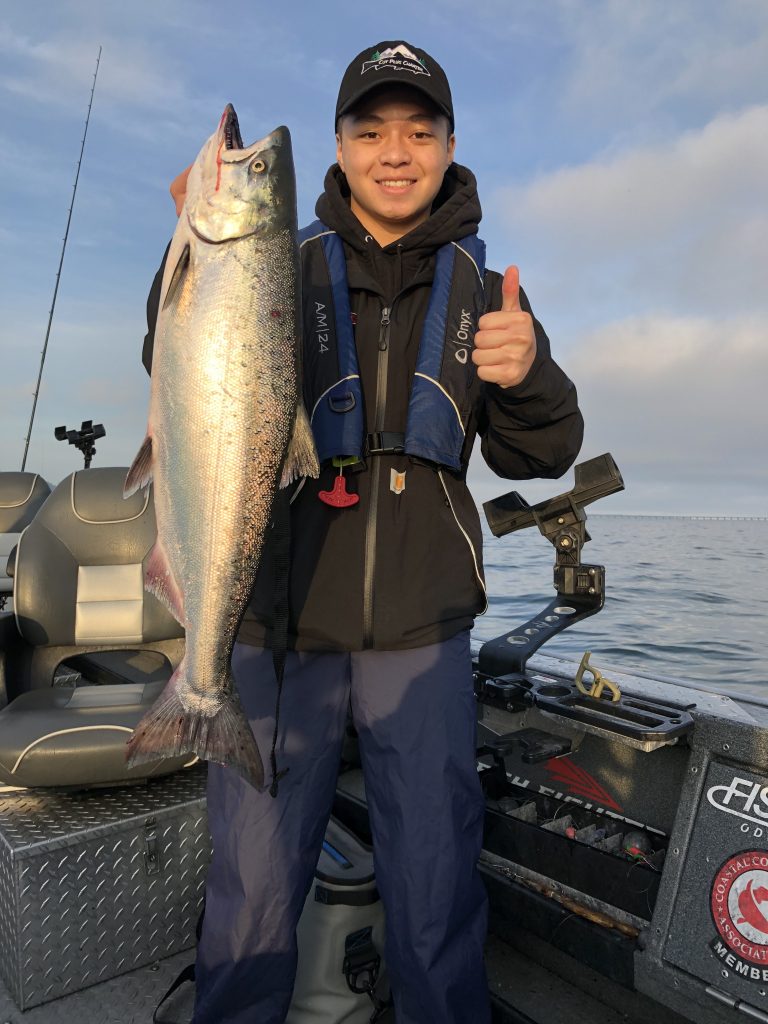
The Columbia River early coho forecast is 130,700 (545,000 was forecast in 2019 and actual return was 191,400); late coho is 50,300 (360,600 and 106,100); and Oregon coast natural coho is 83,000 (76,100 and 107,600).
The Makah Tribes intends to keep their facilities including the marina and boat launch closed until sometime in early July over concerns related to COVID-19 but WDFW staff has been in contact with the tribes and Governor’s office to see when the northern coast could reopen. The Quileute Tribe at La Push has indicated their facilities including the marina and boat launch will also remain closed until early July. This could affect the Marine Catch Area 4 salmon fishery but one option being weighed is to allow anglers to run from Sekiu in Area 4 to the fishing grounds and back.
Hatchery king fishing opens July 1 in the Strait of Juan de Fuca from Sekiu to Port Angeles; south-central Puget Sound from Vashon Island to Tacoma; and the San Juan Islands. Those will be followed by northern and central Puget Sound opening July 16 for hatchery kings.
Go to places right now for salmon
Those who want to get a jump start can pursue coho in central Puget Sound although fishing was spotty this past week since it opened on June 1. The Tulalip Bubble fishery is open and was slow to fair for kings. Fishing is open each week from 12:01 a.m. Fridays through 11:59 a.m. Mondays only (closed on June 15 for a tribal ceremonial fishery).
Some hatchery kings up to 20 pounds have started to show up in catches around southern Puget Sound south of the Narrows Bridge. Most anglers have been working Point Fosdick, and from the Concrete Dock off Fox Island south to Gibson Point and Toy Point. Other spots worth checking out are Anderson and Ketron islands.
Many piers are open year-round for salmon in Puget Sound including the Edmonds Marina, Fox Island, Seacrest in West Seattle, Waterman, Bremerton Boardwalk, Illahee State Park, Dash Point Dock, Point Defiance Boathouse Dock, Les Davis, Des Moines, and Redondo piers.
Word on spot shrimp opener
The first chance of the spot shrimp season occurred on May 28 and those who ventured out since then have found good to excellent catches of prawn-sized shrimp.
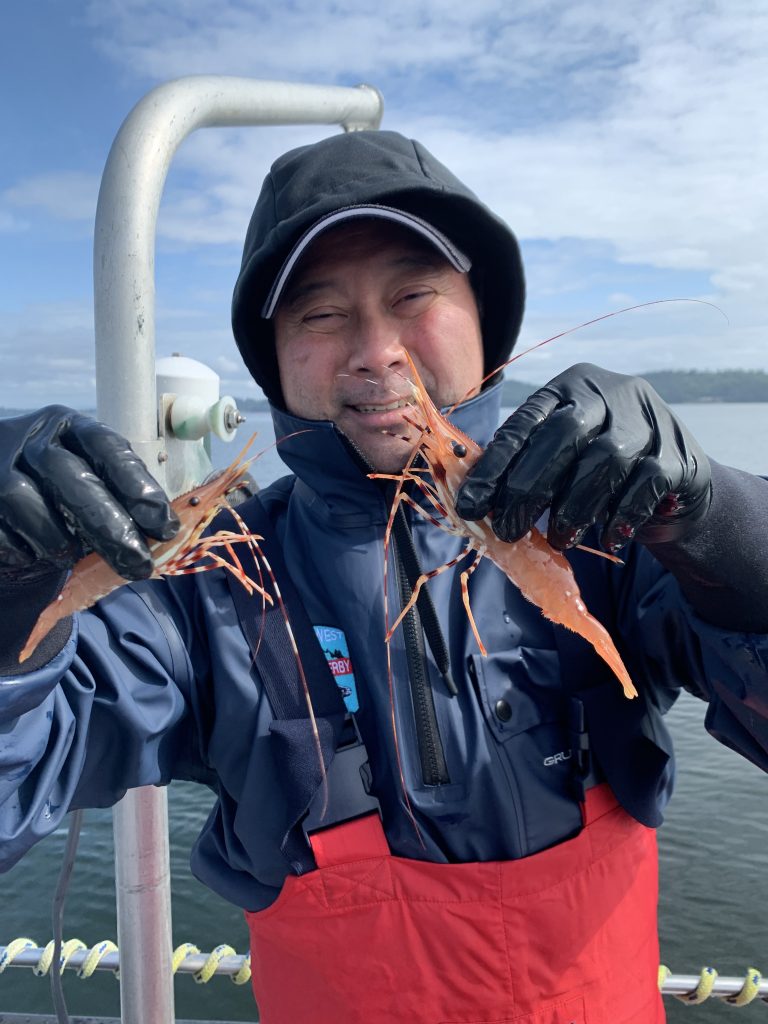
A check May 28 from the John Wayne Marina at Sequim showed 27 boats averaging 151 spot shrimp per boat (80 spot shrimp per person is a daily limit), according to Velasquez.
“It was a pretty average catch (on May 28 opener) and kind of what we expected to see,” Velasquez said. “I don’t have the creel data to back it up but heard those who fished off Iceberg Point (in San Juan Islands) were pretty much limiting out.”
The western Strait of Juan de Fuca (Marine Catch Area 5) is open daily and closes once the catch quota is achieved. The eastern Strait of Juan de Fuca (Area 6) – outside of Discovery Bay – is open daily now through June 13, and then open four days per week (Thursdays to Sundays only) beginning June 18 and will close once the quota is achieved.
The Discovery Bay Shrimp District (6) will be open June 11, 15 and 28 only from 7 a.m. to 3 p.m. each day.
The San Juan Islands (Iceberg Point, Point Colville, Biz Point, Salmon Bank, northern Rosario Strait, Bellingham Bay, Sucia and Matia Islands and Strait of Georgia (7 South and 7 East) are open June 11, 15, 26, 28 and 30. Fishing is allowed one hour before official sunrise and gear must be pulled before one hour after official sunset.
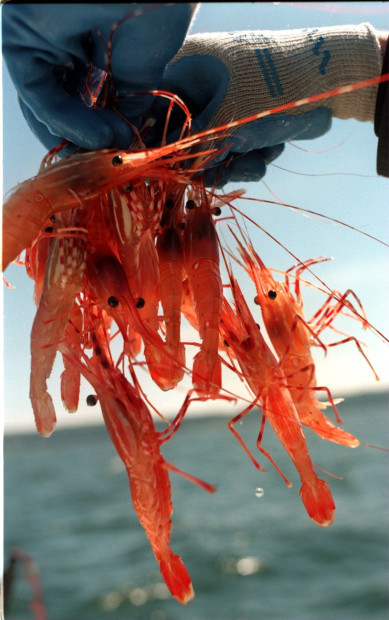
The San Juan Islands in San Juan Channel, Spieden Channel, Stuart, and Waldron Islands (7 West) is open daily now through June 13, and then open four days per week (Thursdays to Sundays only) beginning June 18 and will close once the quota is achieved.
The east side of Whidbey Island (8-1 and 8-2); Northern Puget Sound (9); Elliott Bay (10); and South-central Puget Sound (11) is open June 11 from 7 a.m. to 1 p.m. Central Puget Sound (10) excluding Elliott Bay is open June 11 from 7 a.m. to 11 a.m. Any extension beyond June 11 depends on catch assessments.
Hood Canal (12) will be open June 11 from 9 a.m. to 1 p.m. plus June 15, 26, 28, and 29 and July 15 and 28 depending on catch assessment.
Shrimp traps can be set one hour before official sunrise during any open period in Marine Catch Areas 4, 5, 6 (except for the Discovery Bay Shrimp District), 7 East, 7 South, and 7 West only.
The total spot shrimp sport harvest in 2019 was 208,223 pounds (194,863 in 2018) and the non-tribal commercial take was 94,651 pounds (97,578 in 2018) for a total of 302,874 pounds (292,441 in 2018).
Southern Puget Sound south of the Narrows Bridge is open for coonstripe and pink shrimp everyday through October 15. Maximum depth that you can set your pot is 200 feet with a 10 pound per person daily limit.

